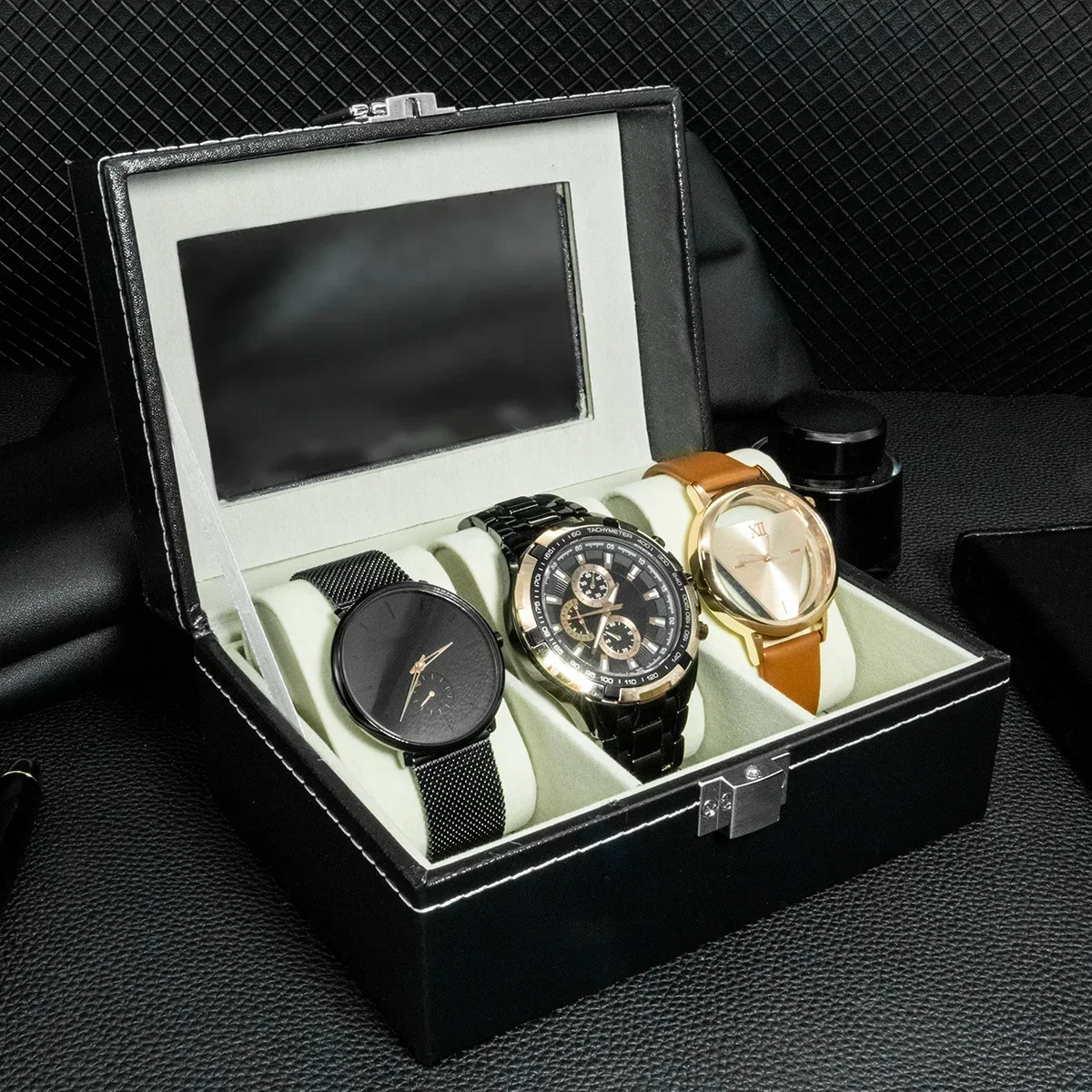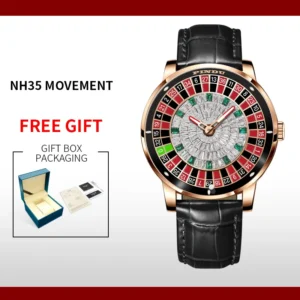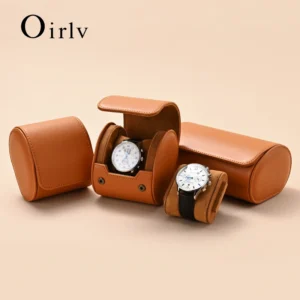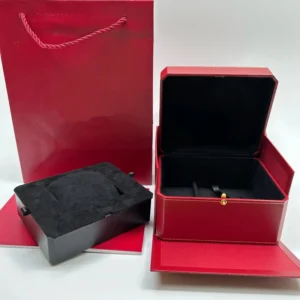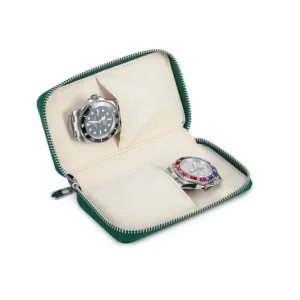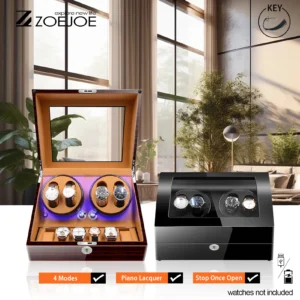Introduction
For watch enthusiasts, a timepiece is more than just a tool to tell time—it’s an investment, a style statement, and often a cherished possession. When you’ve invested in quality watches, proper storage becomes not just a convenience but a necessity. A watch box serves multiple critical purposes: protecting delicate mechanisms from dust and humidity, preventing scratches on polished surfaces, organizing your collection, and displaying your timepieces with pride.
Without proper storage, even the most prestigious watches can suffer damage that diminishes both their aesthetic appeal and resale value. Scratched crystals, stretched bracelets, and movement issues can all result from improper storage—problems that are easily preventable with the right watch box.
Whether you’re a seasoned collector with dozens of timepieces or just beginning your journey with a few special watches, understanding what features matter in a quality watch box will help protect your investment for years to come. In this comprehensive guide, we’ll explore everything from essential protective elements to aesthetic considerations, helping you make an informed decision about men’s watch storage essentials that will serve your collection properly.
Essential Protective Features
Protection is the fundamental purpose of any watch box, and should be your primary consideration when evaluating options. A quality watch box creates a defensive barrier between your precious timepieces and potential damage from the environment, handling, and accidents.
The protection offered by a watch box operates on three critical levels: exterior durability to shield from external threats, interior cushioning to prevent scratches and movement, and physical security to deter unauthorized access. These elements work in concert to safeguard both the mechanical integrity and aesthetic qualities of your watches.
When assessing protective features, it’s important to consider both immediate and long-term needs. While a basic box might seem adequate initially, watches represent significant investments that deserve storage solutions that will protect them for years or even decades. The right protective features vary based on your collection’s value and the specific requirements of individual watches.
Common threats to watches include scratched crystals from contact with hard surfaces, bracelet stretching from improper positioning, and movement issues resulting from dust contamination or excessive humidity. A quality watch box addresses all these concerns through thoughtful design and materials.
For collections of significant value, our luxury watch boxes provide premium protective solutions designed specifically for discerning collectors.
A. Exterior Materials & Construction
The exterior of a watch box serves as the first line of defense for your timepieces, making material selection and construction quality crucial considerations. Different materials offer varying levels of protection, durability, and aesthetic appeal:
Wood: The most traditional and widely used material. Solid hardwoods like walnut, cherry, and mahogany offer superior durability and a classic appearance compared to veneered MDF (medium-density fiberboard). Hardwoods typically resist warping and maintain their appearance over time.
Leather: Available in genuine leather or synthetic/vegan alternatives. Genuine leather provides a luxurious feel and develops character over time, while synthetic options often offer greater consistency and sometimes better resistance to moisture.
Carbon fiber: A modern option valued for its exceptional strength-to-weight ratio. Carbon fiber watch boxes are extremely durable while remaining lightweight, though typically command premium prices.
Metal: Aluminum and stainless steel options provide excellent durability and a contemporary aesthetic. These materials offer superior resistance to physical damage but may require interior padding to prevent shock transfer.
Glass/acrylic elements: Often incorporated as viewing panels in the lid or sides. Glass offers better scratch resistance and clarity, while acrylic is lighter and more shatter-resistant.
Beyond materials, construction quality reveals itself through several key indicators. Quality hinges (particularly piano hinges that run the full length of the box) ensure smooth, durable operation. Well-reinforced corners prevent structural weakening over time. Precise joinery, such as dovetail or finger joints in wooden boxes, demonstrates superior craftsmanship compared to simple butt joints.
Environmental factors should also influence your material choice. If you live in a humid climate, certain woods and treatments provide better resistance to moisture and warping. For understanding more about material options and their specific properties, our guide on what are watch boxes made of provides detailed information.
B. Interior Lining & Cushions
While exterior materials protect against environmental threats, the interior components of a watch box directly contact your timepieces, making their quality equally critical. The ideal interior creates a soft, secure environment that prevents scratches while holding watches firmly in place.
The lining material is your watch’s immediate surroundings and should be chosen carefully:
Velvet: The classic choice, offering a luxurious appearance and soft touch. However, velvet can collect dust over time and may require occasional cleaning.
Suede: Provides excellent protection with a premium feel. Its slightly textured surface helps prevent watches from sliding while remaining gentle on polished surfaces.
Microfiber: A modern alternative that’s lint-free and often more resistant to dust accumulation than traditional materials. It’s particularly effective for cleaning sensitive watch surfaces.
Silk: The premium option, offering unparalleled smoothness and a distinctly luxurious appearance, though typically found only in high-end watch boxes.
Watch cushions are perhaps the most critical interior component, serving to secure timepieces and prevent movement. Quality cushions strike a delicate balance—firm enough to maintain their shape and support watches securely, yet soft enough to prevent scratching and accommodate different watch sizes.
The best cushions compress slightly to accommodate metal bracelets without stretching them, while maintaining enough structure to properly support leather straps. Removable cushions offer additional versatility, allowing for cleaning or replacement as needed. Proper spacing between compartments ensures watches don’t touch each other, preventing potential scratches.
Some premium interior materials also offer anti-tarnish properties, particularly valuable for watches with polished elements or precious metal components. For specialized cushioning solutions that properly support your timepieces, explore our selection of watch pillows designed for optimal protection.
II. Capacity & Organization Features
Determining the right capacity for your watch box requires honest assessment of both your current collection and realistic growth expectations. While it’s tempting to choose a box that precisely fits your current collection, most enthusiasts find their collections expand over time.
Watch boxes typically come in standardized slot configurations—most commonly 6, 8, 10, 12, or 24 positions. A general rule of thumb is to select a box with at least 2-4 positions beyond your current collection size to accommodate future acquisitions. However, physical space constraints must also be considered, as larger boxes require more surface area for placement.
The dimensions of individual watch compartments matter significantly, especially if you own larger sports watches (45mm or greater) or watches with unusual case shapes. Standard watch cushions accommodate cases between 38-42mm comfortably, but larger pieces may require specially designed slots with additional clearance.
Vertical clearance is equally important—the distance between the top of the watch and the closed lid should prevent contact with the glass or box top. Most quality boxes provide at least 15-20mm of clearance above the watch face.
Consider where you’ll place your watch box when evaluating its footprint. A box destined for a dresser top should measure its surface area carefully, while one planned for a closet shelf must account for both depth constraints and potential height limitations. Some collectors prefer multiple smaller boxes rather than a single large unit, offering greater flexibility in placement.
For more guidance on selecting the right size and configuration for your needs, our guide to choosing perfect multi-watch case offers additional insights on matching capacity to collection requirements.
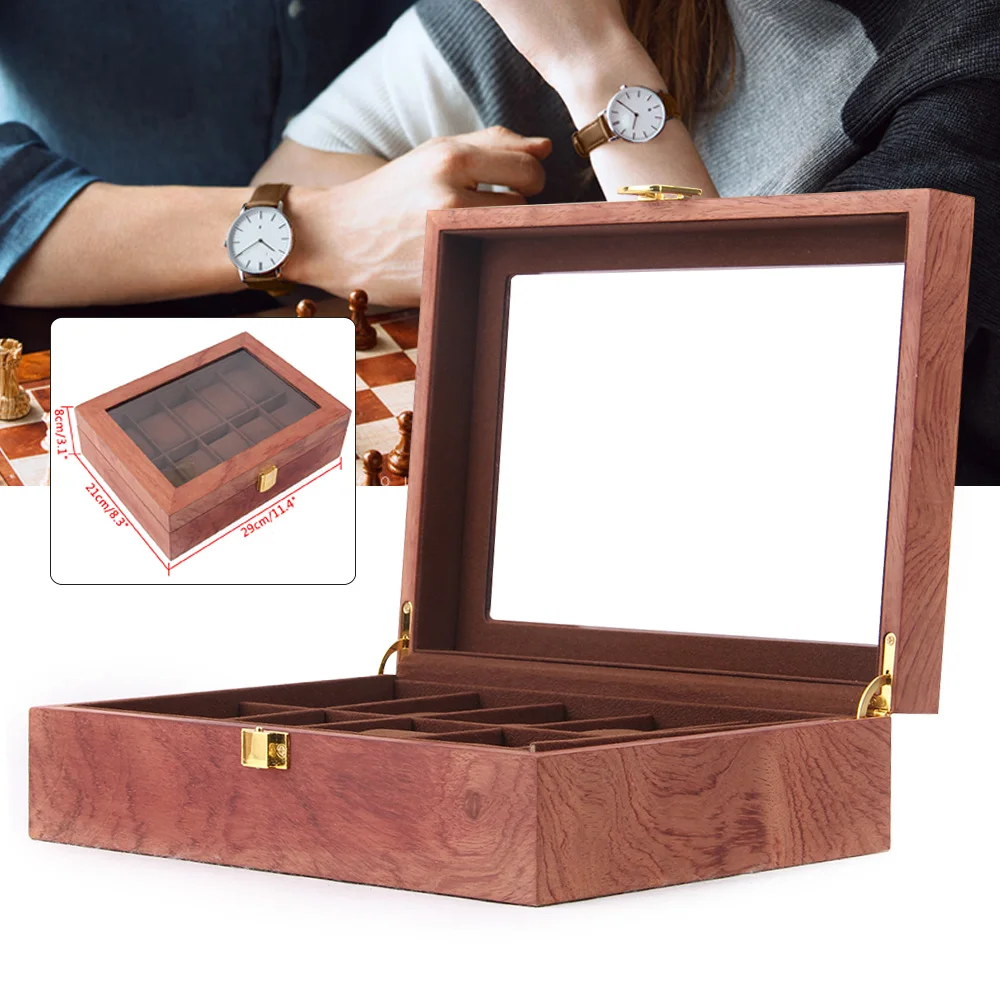
III. Advanced Functionality Features
Beyond basic storage, premium watch boxes offer advanced features that enhance both protection and convenience for the discerning collector. These specialized functions transform a simple storage container into a comprehensive watch management system.
Watch Winder Integration
For collectors with automatic watches, integrated winders maintain proper operation by mimicking wrist movement. Quality watch winders offer:
- Adjustable TPD (turns per day) settings to match different movement requirements (typically ranging from 650-1800 TPD)
- Bi-directional or customizable rotation patterns (clockwise, counter-clockwise, or alternating)
- Quiet, vibration-free motors that won’t disturb even in bedroom settings
- Power options including battery operation for flexibility or AC power for reliability
The best winding modules balance consistent operation with mechanical longevity, using precision gear systems rather than direct-drive mechanisms that can wear quickly. For collectors with investment-grade automatic watches, our automatic watch winder collection offers optimized winding solutions for various movement types.
Security Features
As collections grow in value, security becomes increasingly important. Advanced watch boxes may include:
- Quality lock mechanisms ranging from simple key locks to combination systems
- Hidden compartments for particularly valuable pieces
- Privacy features like solid construction (versus transparent lids) to conceal contents from casual view
- Anti-theft features such as heavier construction or anchor points
The appropriate security level depends on your living situation and collection value, balancing protection with convenient access.
Display Enhancements
For collectors who appreciate the aesthetic value of their timepieces:
- Glass viewing panels offer superior clarity and scratch resistance compared to acrylic alternatives
- LED lighting systems illuminate watches without generating heat that could damage delicate components
- UV-resistant glass protects dials from color fading, particularly important for vintage pieces
Extra Storage Solutions
Comprehensive watch storage often extends beyond the watches themselves:
- Dedicated drawers for tools, spring bars, and other small accessories
- Strap storage compartments that prevent creasing and maintain leather condition
- Documentation storage for warranties, certificates, and manuals
These advanced features transform a simple watch box into a complete collection management system, particularly valuable for collectors with diverse timepieces requiring different care approaches.
IV. Travel & Portability Considerations
Travel presents unique challenges for watch storage, requiring different features than home display boxes. A dedicated travel case prioritizes protection during movement, while a display box optimizes presentation in a static environment.
Travel-specific watch storage should feature:
- Impact-resistant exterior materials that absorb shocks and vibrations
- Secure closure systems that prevent accidental opening during transit
- Compressed design that maximizes protection while minimizing space requirements
- Weight considerations for comfortable portability
The best travel cases include foam padding specifically designed to prevent movement during transport, securing watches firmly without applying pressure to delicate components. Waterproof exteriors provide additional protection against unexpected environmental exposure.
For frequent travelers, TSA compliance factors become important—cases should ideally be compact enough to remain with carry-on luggage rather than being subjected to checked baggage handling. Typical travel case dimensions stay under 10” × 6” × 3” to fit easily in carry-on bags.
Some versatile options serve dual purposes, functioning as both travel protection and temporary display at your destination. These convertible cases typically feature more robust construction than pure display boxes but include presentation elements like viewing panels.
Security considerations become particularly important when traveling with valuable timepieces. Discreet designs that don’t advertise contents can reduce theft risk, while secure closure systems prevent accidental opening.

For collectors who regularly transport their timepieces, our watch travel cases offer specialized protection designed specifically for the challenges of mobility.
V. Aesthetic & Design Elements
A watch box does more than protect your collection—it displays it, often becoming a feature piece in your home. The aesthetic design should complement both your personal style and your interior décor.
Watch box designs typically fall into distinct style categories:
Classic/Traditional: Characterized by wood construction (often with visible grain), brass hardware accents, and sometimes leather elements. These boxes project a timeless, sophisticated appearance that complements traditional interiors.
Modern/Minimalist: Features clean lines, monochromatic color schemes, and minimal visible hardware. These boxes blend seamlessly with contemporary décor and often emphasize the watches themselves rather than the container.
Luxury/Premium: Distinguished by exotic materials, detailed craftsmanship touches like inlay work or hand stitching, and often bearing prestigious brand names. These boxes make a statement about the collection’s value and the collector’s discernment.
Technical/Contemporary: Incorporates modern materials like carbon fiber, innovative opening mechanisms, and sometimes technological elements like integrated lighting or electronic locks. These designs appeal particularly to collectors of sports and technical watches.
Many premium watch boxes offer personalization options, including monogramming, custom configurations of interior compartments, or even bespoke construction to precise specifications. These personal touches transform a functional item into a meaningful possession that enhances the collecting experience.
Display considerations should reflect how you interact with your collection—some collectors prefer maximum visibility with glass tops for easy selection, while others prioritize a clean exterior appearance with watches revealed only when the box is opened.
For more insights on integrating watch storage with your home’s aesthetic, our guide to styling watch box home decor offers practical advice for collectors.
VI. Evaluating Value & Quality
Assessing the value proposition of a watch box requires looking beyond basic materials to examine craftsmanship details that indicate quality and longevity. True quality reveals itself in elements that might not be immediately apparent:
- Joinery techniques: Dovetail or finger joints in wooden boxes indicate superior construction compared to simple glued butt joints
- Consistent finishing: Even application of stains, lacquers, or oils without drips, uneven coloration, or rough spots
- Hardware quality: Solid metal hinges with smooth operation, secure latches, and properly seated fixtures
- Interior precision: Perfectly fitted cushions, even spacing between compartments, and consistent lining application
A quality watch box has substantial weight and solidity that communicates durability. Moving parts like hinges, latches, and drawers should operate smoothly without catching or excessive play. Interior components should fit precisely, with cushions firmly seated but removable for cleaning.
Watch boxes generally fall into distinct price categories that reflect their quality level:
- Entry-level ($30-100): Basic protection with simpler materials (often veneered MDF rather than solid wood), adequate for beginning collectors or as secondary storage
- Mid-range ($100-300): Solid construction with genuine materials, reliable protection suitable for most collections
- Premium ($300-1000+): Exceptional craftsmanship, premium materials, and additional features like winders or custom elements
From a long-term investment perspective, the quality of your watch storage should generally align with the value of your collection. A simple guideline: consider investing approximately 5-10% of your collection’s value in storage solutions to ensure adequate protection.
For collectors seeking exceptional quality and craftsmanship, our wooden watch boxes offer premium materials and construction techniques that stand the test of time.
VII. How to Choose the Right Watch Box for Your Collection
Finding the perfect watch box requires a systematic approach based on your specific collection and needs. Follow these steps for a decision that will serve you well long-term:
Assess your current collection: Count your watches and note their specific characteristics—case sizes, strap types, and any unusual features like crown guards that might require additional space.
Project future growth: Be realistic about how your collection might expand over the next 3-5 years. Most collectors underestimate future acquisitions.
Determine primary purpose: Will this box primarily display your collection, provide secure storage, or serve for travel? Different uses demand different features.
Consider space constraints: Measure your intended placement location precisely, accounting for lid opening clearance if placed under shelving.
List must-have features: Separate essential features from preferences to focus your search effectively.
Establish your budget: Set a realistic spending range that reflects both your collection’s value and your financial comfort zone.
Different collection types have specific storage needs worth considering:
For automatic watches, consider whether winding functionality is necessary. Many collectors find winders essential for frequently worn pieces but unnecessary for occasional-wear watches.
Vintage timepieces often benefit from humidity-controlled environments, making boxes with better seals or even integrated humidity regulation worth considering.
High-value collections warrant additional security features and perhaps insurance-approved locking mechanisms, while mixed collections with varying sizes might require adjustable cushions to accommodate different dimensions.
The ideal balance between aesthetics and functionality depends entirely on your priorities. Some collectors emphasize presentation, preferring display-oriented designs with glass viewing panels, while others prioritize protection with more robust construction.
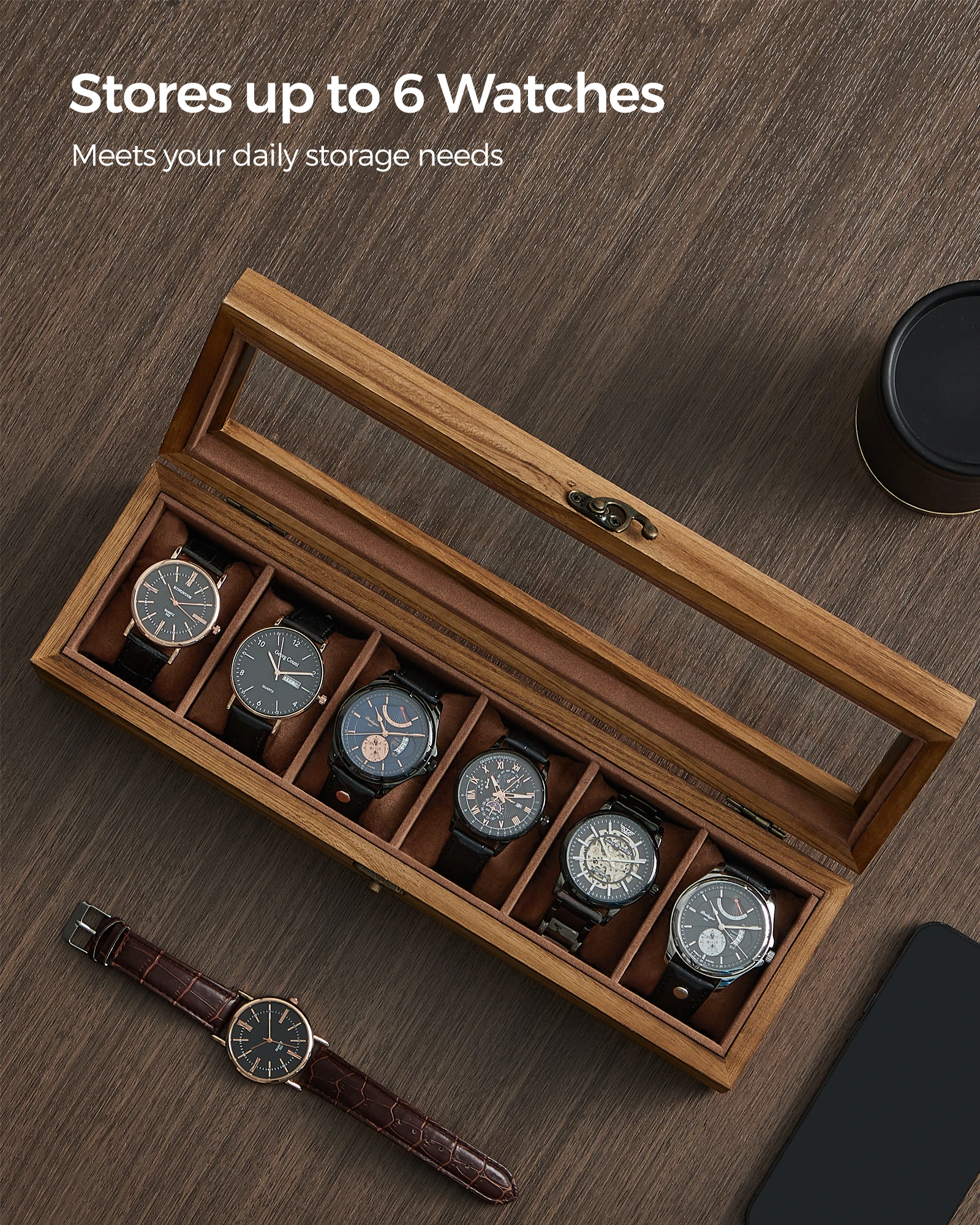
For more specific recommendations tailored to different collection types and preferences, explore our guide to best watch boxes male collectors prefer for various collection styles.
VIII. Complete Watch Box Feature Checklist
Use this comprehensive checklist when evaluating potential watch box purchases, prioritizing features based on your specific needs:
Essential Protective Features:
– Solid, durable exterior construction without flexing or loose joints
– Quality hinges that operate smoothly and support the lid fully open
– Secure closure mechanism that prevents accidental opening
– Non-abrasive interior lining without loose threads or uneven application
– Proper cushion firmness that holds watches securely without deformation
Interior Quality Features:
– Sufficient spacing between compartments to prevent watches touching
– Removable cushions for cleaning or replacement
– Even, tight application of interior lining material
– Adequate clearance between watches and lid when closed
– Anti-tarnish properties in lining materials (if applicable)
Capacity and Organization:
– Sufficient slots for current collection plus reasonable growth
– Appropriately sized compartments for your specific watches
– Logical layout that maximizes space efficiency
– Adaptability to different watch sizes if collection varies
Advanced Functionality:
– Watch winder rotation settings appropriate for your movements (if applicable)
– Quiet motor operation in winding models
– Secure locking mechanism appropriate to collection value
– LED lighting with even illumination (if display is a priority)
– Additional storage for accessories properly segregated from watches
Travel-Specific Features (if applicable):
– Impact-resistant exterior material
– Secure interior mounting to prevent movement during transport
– Compact dimensions suitable for carry-on luggage
– Weight appropriate for comfortable portability
Aesthetic Considerations:
– Design complementary to your home décor
– Finish quality consistent throughout the piece
– Hardware (hinges, clasps) that enhances rather than detracts from appearance
– Proportional dimensions that appear balanced and intentional
Value Indicators:
– Construction techniques appropriate to price point
– Materials consistent with represented quality level
– Brand reputation for quality and customer service
– Warranty coverage that reflects manufacturer confidence
This checklist serves as a practical tool to evaluate potential purchases systematically rather than emotionally, helping ensure your selection meets your specific requirements. For more detailed guidance on evaluating specific features, our comprehensive guide to features look watch organizers provides in-depth analysis.
Luxury Watch Boxes, Men's Watch Boxes, Single Watch Box
Price range: $903.35 through $980.97 Select options This product has multiple variants. The options may be chosen on the product pageSingle Watch Travel Case, Watch and Jewelry Box, Watch Roll Travel Case
Price range: $93.44 through $140.65 Select options This product has multiple variants. The options may be chosen on the product pageAutomatic Watch Winder, Luxury Watch Winder, Single Watch Box
$307.39 Select options This product has multiple variants. The options may be chosen on the product pageLuxury Watch Boxes, Luxury Watch Travel Case
Price range: $200.33 through $224.57 Select options This product has multiple variants. The options may be chosen on the product pageLeather Watch Travel Case, Men's Watch Travel Case, Watch Roll Travel Case
Price range: $91.37 through $92.63 Select options This product has multiple variants. The options may be chosen on the product page4 Watch Winder, 6 Watch Box, Automatic Watch Winder
$512.31 Select options This product has multiple variants. The options may be chosen on the product page
IX. Watch Box Maintenance Tips
Proper maintenance of your watch box extends its lifetime and ensures continued protection for your timepieces. Different materials require specific care approaches:
For Wooden Watch Boxes:
– Dust regularly with a soft, lint-free cloth
– Apply quality wood polish quarterly (avoiding silicone-based products)
– Keep away from direct sunlight to prevent fading and drying
– Maintain moderate humidity levels (40-60%) to prevent warping
For Leather Exteriors:
– Remove dust with a soft cloth
– Apply appropriate leather conditioner annually
– Keep away from heat sources that can dry and crack the leather
– Avoid water contact that can stain or warp leather elements
Interior Maintenance:
– Vacuum interior gently using low suction and soft brush attachment
– Remove cushions periodically to clean beneath them
– Spot clean velvet or suede with appropriate fabric cleaners only when necessary
– Replace worn cushions rather than allowing deterioration
Environmental Considerations:
– Position away from direct sunlight, heating vents, and humid areas
– For valuable collections, consider room humidity monitoring
– Avoid placement near windows where temperature fluctuates significantly
– Keep away from areas with cooking vapors or smoke that can penetrate materials
Hardware Maintenance:
– Check hinges periodically for proper function
– Apply minimal amounts of appropriate lubricant to locks if they begin sticking
– Tighten any loose screws promptly before they cause alignment issues
Watch for early warning signs of wear—loose hinges, cushions losing their shape, or lining becoming detached—and address them promptly before they compromise your watches’ protection. For more detailed information on proper care techniques for both watches and their storage solutions, our guide to how men can store watches properly provides valuable maintenance insights.
X. Frequently Asked Questions
Are watch winders necessary for automatic watches?
Watch winders aren’t strictly necessary but are convenient for frequently worn automatic watches. They keep the movement running and complications set correctly. However, occasional-wear pieces can simply be wound manually before use, and some collectors prefer to let watches rest to reduce wear on components.
How many watches should a beginner collector plan space for?
Most beginning collectors underestimate future acquisitions. Even if you currently own just 2-3 watches, consider a 6-8 position box to accommodate the almost inevitable expansion of your collection as your interest develops.
What’s the best material for humid environments?
In high-humidity areas, solid hardwoods with quality finishes generally outperform particleboard or MDF options. Cedar provides natural humidity resistance, while metal cases with good seals can also perform well. Consider adding silica gel packets for additional moisture control.
Can I store other jewelry in a watch box?
Many watch boxes include additional compartments specifically designed for other jewelry items. However, avoid storing items that could scratch watch cases if compartments aren’t completely separated. Some metals and gemstones are harder than watch crystals and case materials.
How do I clean velvet or suede interiors?
For velvet or suede, use a soft brush vacuum attachment on low power. For spot cleaning, use minimal moisture with fabric-specific cleaners, allowing complete drying before returning watches. Never saturate cushions or linings, as moisture can damage the underlying structure.
Is it safe to store watches with batteries in a closed box?
Yes, but check quartz watches regularly (every 3-6 months) for signs of battery leakage, which can cause significant damage. Consider removing batteries from watches that won’t be worn for extended periods, particularly in watches that aren’t water-resistant.
Should I remove watches from winders periodically?
Periodic rest for automatic watches is beneficial. Many collectors use a rotation system, keeping regularly worn watches on winders while storing less frequently worn pieces statically. This practice can extend the service intervals for watches not in regular rotation.
For additional accessories that complement proper watch storage and maintenance, explore our collection of essential storage items mens watches rely on for optimal condition.

